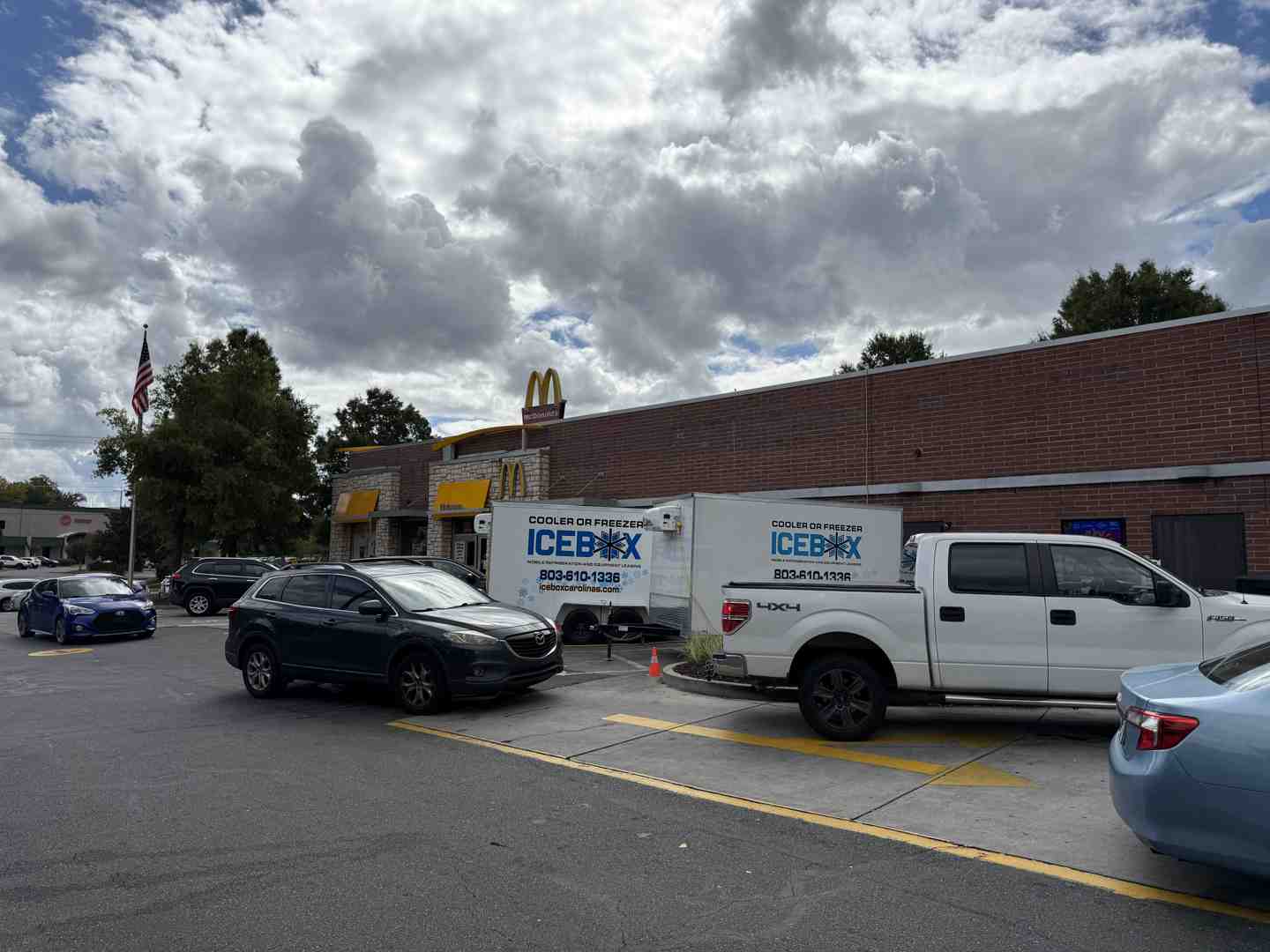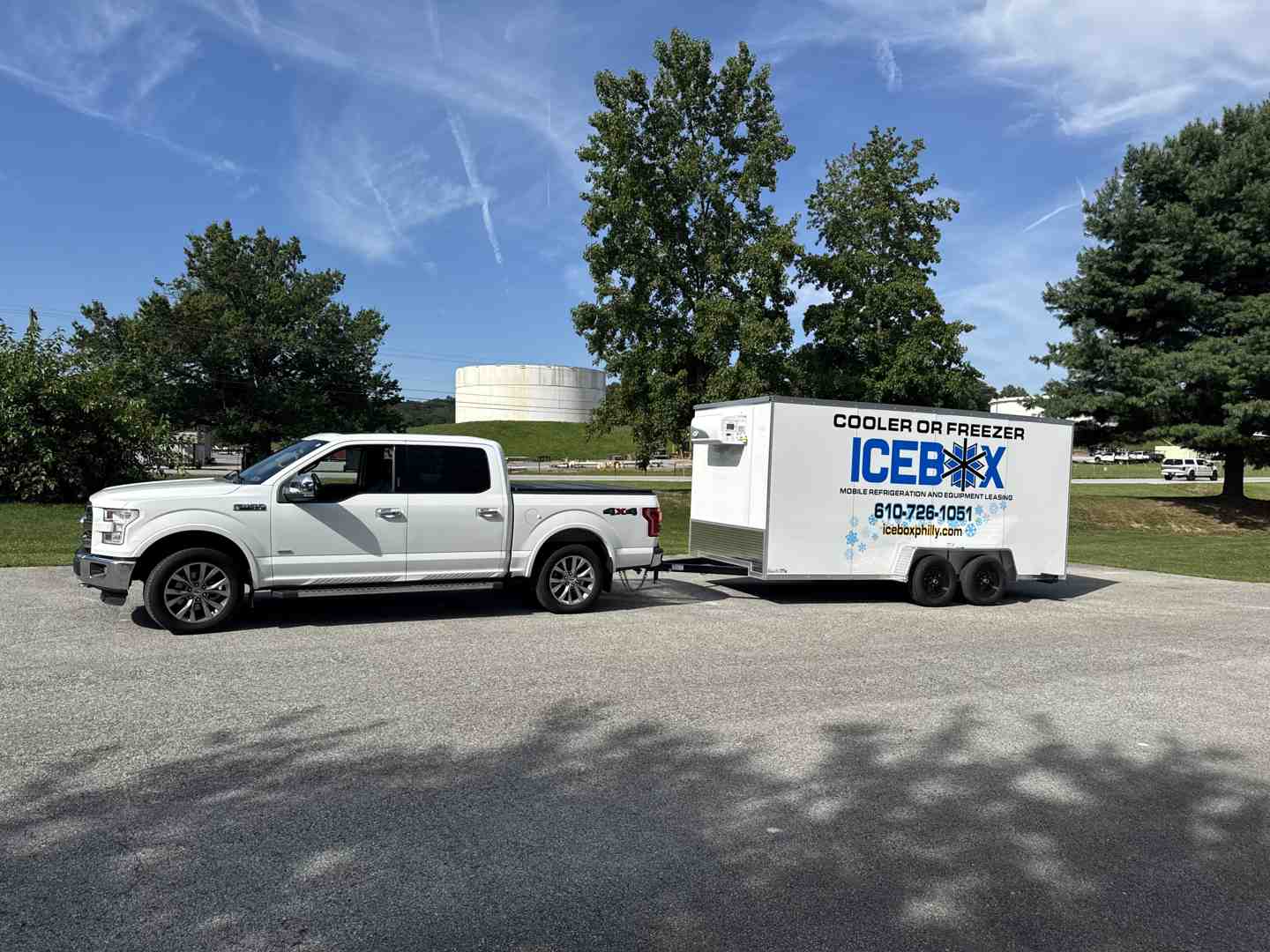The Role of Cold Storage Refrigeration in Modern Industry
Cold storage refrigeration is essential in today's world, ensuring perishable and sensitive goods stay fresh, safe, and effective. Whether you're storing food, pharmaceuticals, or artwork, understanding how these systems work ensures you can maintain quality and extend storage life.
What is Cold Storage Refrigeration?
It's a system used to store products at low temperatures to preserve their quality and safety.Types of Goods That Need Cold Storage:
- Perishable foods
- Medicines and vaccines
- Floral and botanical items
Industries Relying on Cold Storage:
- Food and beverage
- Healthcare
- Import/export
Benefits of Efficient Refrigeration Systems:
- Reduced energy consumption
- Lower operational costs
- Extended product lifespan
In the world of event planning, especially on the East Coast, having dependable cold storage options is crucial. The demand for mobile refrigeration units that offer flexibility and 24-hour emergency service is higher than ever. Advances in refrigeration technology are making these systems more efficient, allowing businesses like Icebox to provide innovative and sustainable solutions that cater to the needs of busy professionals.

Learn more about cold storage refrigeration:
Understanding Cold Storage Refrigeration
Cold storage refrigeration is the backbone of industries that rely on temperature-sensitive products. From ensuring your favorite ice cream doesn't melt before it reaches the grocery store to keeping life-saving vaccines effective, these systems are vital.
Temperature Control
Maintaining precise temperatures is crucial. A few degrees can mean the difference between fresh and spoiled. Cold storage systems use advanced controls to ensure consistent temperatures, typically ranging from 2°C to 8°C for most products. Temperature control is like the conductor of an orchestra, ensuring every part plays its role perfectly to keep your goods safe.
Direct Expansion System
One common method in cold storage refrigeration is the direct expansion system. Imagine it as a simple, efficient way to cool air directly. The refrigerant, acting as the cooling agent, expands and absorbs heat as it moves through the system. This straightforward process makes it a popular choice for many businesses.
Ammonia Systems
Ammonia systems have been around for a long time. They are known for being efficient and cost-effective, especially in large-scale operations. Ammonia has a low global warming potential (GWP), making it a sustainable option. However, it requires careful handling due to its toxic nature. Think of ammonia systems as the classic car of refrigeration—reliable but needs a skilled driver.
Transcritical CO2 Systems
The transcritical CO2 system is a modern marvel in refrigeration technology. It's gaining popularity because CO2 is a natural refrigerant with a GWP of just 1, meaning it's very eco-friendly. These systems are particularly effective in colder climates, making them a great choice for regions like the East Coast of the United States. They offer a safer and more sustainable alternative to traditional refrigerants.

In summary, understanding these systems is crucial for anyone involved in industries that rely on cold storage. Whether you're choosing an ammonia system for its efficiency or a transcritical CO2 system for its sustainability, the right choice can make a significant difference in operational costs and environmental impact.
Next, we'll explore the key components that make these cold storage systems tick.
Key Components of Cold Storage Systems
When it comes to cold storage refrigeration, several key components work together to maintain the perfect environment for temperature-sensitive goods. Each part plays a critical role in ensuring efficiency, reliability, and cost-effectiveness.
Thermostatic Valves
Thermostatic expansion valves (TEVs) are commonly used in cold storage setups. They regulate the flow of refrigerant into the evaporator, maintaining the right temperature. While they are cost-effective and simple, they have a downside: they can lead to the drying out of unpacked goods due to less precise control.
Electronic Expansion Valves
For more precision, many facilities opt for electronic expansion valves (EEVs). These valves offer better control by adjusting refrigerant flow based on real-time data from sensitive sensors. This means less energy use and reduced drying out of products. For instance, vegetables stored with EEVs stay fresh longer, maintaining their visual appeal and quality.
Evaporators
Evaporators are the heart of any cooling system. They absorb heat and bring cold air into the storage space. The choice of evaporator size and type can significantly impact efficiency. Larger evaporators can improve conditions by achieving higher evaporation temperatures and reducing dehumidification, which is crucial for preserving product quality.
Defrosting Methods
Defrosting is essential to prevent frost build-up on evaporators, which can hinder performance. Frost forms when the evaporator temperature drops below 0°C, drawing moisture from both the air and stored goods. Regular defrosting ensures efficient heat transfer and air circulation. The frequency and duration of defrosting depend on factors like product moisture content and the number of door openings.
In summary, choosing the right components for your cold storage system can lead to significant improvements in efficiency and product preservation. Next, we'll dive into how these components can be optimized for energy efficiency.
Energy Efficiency in Cold Storage
Energy efficiency is a big deal in cold storage refrigeration. Why? Because energy costs are the second highest operating expense for these facilities. So, how can cold storage systems be more energy-efficient? Let's break it down.
Energy Consumption
Refrigeration systems are energy-hungry. They account for over 90% of the energy used in cold storage distribution centers. But there are ways to cut down on energy use without compromising on temperature stability.
One effective strategy is to run refrigeration equipment fewer hours. By using Thermal Energy Storage (TES), facilities can maintain required temperatures even when the refrigeration system is off for up to 13 hours. TES absorbs up to 85% of heat infiltration, cutting down on both runtime and energy costs.

Thermal Energy Storage
TES isn't just about cutting runtime. It's also about shifting refrigeration loads to avoid peak pricing times. Many utilities charge more during peak hours. But with TES, cold storage operators can store cold during off-peak times and use it during peak periods, saving money.
For example, a 93,000 square foot warehouse in California used TES to reduce its peak period energy consumption by 43% every weekday. That's a significant saving on the utility bill.
Defrost on Demand
Defrosting is crucial for maintaining efficiency, but it can also be a major energy drain. Traditional defrosting methods often run on fixed schedules, leading to unnecessary energy use.
Defrost on demand systems change that. They use sensors to detect frost build-up and initiate defrosting only when necessary. This smart approach minimizes energy waste and keeps systems running smoothly.
Sustainable Solutions
Sustainability is more than just a buzzword—it's a necessity. Cold storage facilities are increasingly turning to sustainable solutions like transcritical CO2 systems. These systems use natural refrigerants, reducing carbon footprints and aligning with environmental goals.
Additionally, electronic expansion valves (EEVs) offer precision control, optimizing refrigerant flow and reducing energy consumption. This is not just good for the planet; it's also good for business.
Optimizing energy efficiency in cold storage systems is about using smart technologies and strategies. From TES to defrost on demand and sustainable refrigerants, each plays a role in cutting energy costs and boosting efficiency.
Next, we'll tackle some common questions about cold storage refrigeration.
Frequently Asked Questions about Cold Storage Refrigeration
What is cold storage refrigeration?
Cold storage refrigeration is all about keeping things cool to preserve their quality. Think of a refrigerated warehouse as a giant fridge. It's designed to store perishable goods at specific temperatures. A chill store is similar but focuses on slightly warmer temps, ideal for items that need cooling but not freezing.
Temperature maintenance is key. It ensures that food, medicine, and other sensitive goods stay fresh and safe. Without the right temperature, products can spoil quickly.
Which refrigerant is best for cold storage?
Choosing the right refrigerant is crucial for efficiency and sustainability. Ammonia is a popular choice. It's effective and has a low Global Warming Potential (GWP). However, it's mildly flammable and toxic, so safety measures are essential.
Another option is transcritical CO2 systems. These use CO2 as a refrigerant, which is non-flammable and non-toxic. It's also eco-friendly and becoming more popular due to its lower environmental impact.
What temperature should a cold storage refrigerator be?
The ideal temperature for a cold storage refrigerator depends on what's being stored. For most perishable goods, a range of 2°C to 8°C is common. This range helps maintain the quality of items like fresh produce and dairy.
Thermostatic control is vital in achieving this. It allows precise temperature adjustments, ensuring that the storage environment remains consistent and reliable.
In summary, cold storage refrigeration is about maintaining the right temperatures with the right refrigerants. Whether using ammonia or CO2, the goal is to keep products fresh and safe while minimizing environmental impact.
Conclusion
At Icebox, we understand the importance of reliable cold storage solutions. Our mobile refrigeration units are designed to meet your needs with ease and efficiency. Whether you're storing food, pharmaceuticals, or other sensitive products, our systems ensure they stay fresh and safe.
Mobile refrigeration is our specialty, offering flexibility and convenience. Our units are easy to set up, requiring just a standard 110-volt power source. This makes them perfect for events, temporary storage, or any situation where quick and efficient cooling is needed.
We also provide 24-hour emergency service. We know that unexpected issues can arise, and our team is always ready to assist. With locations across the East Coast, including Pittsburgh, PA, and Nashville, TN, we're never far away.
In conclusion, when it comes to maintaining product quality and safety, Icebox has you covered. Our user-friendly mobile refrigeration units and prompt emergency services set us apart. For more information on our rental services, visit our rentals page.
Choose the perfect rental option
Explore our wide range of trailer rentals and find the one that suits your needs
%20(2)-min.webp)
Discover New Blog Posts
Stay updated with our latest blog content.



_compressed.jpeg)

